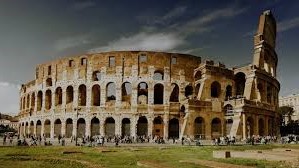Italy is a dream destination for history lovers. Its cobbled streets, ancient ruins, grand cathedrals, and Renaissance art tell stories of empires, revolutions, and cultural rebirths. When it comes to historical landmarks in Italy, there’s truly no shortage. Whether you’re walking through Roman ruins or standing in the middle of a medieval town square, you’re constantly surrounded by echoes of the past.
If you’re planning to visit and want a taste of authentic heritage, here’s a list of the top 10 historical places in Italy country that should be on your travel itinerary.
1. The Colosseum – Rome
No list of historical places in Italy would be complete without the iconic Colosseum. Built around 70–80 AD, this massive amphitheater once held 50,000 spectators who came to watch gladiator battles and public spectacles. Today, it stands as a symbol of the mighty Roman Empire.
Walking through its corridors, you can almost hear the roar of the crowd. The Colosseum is not only an architectural marvel but a powerful reminder of Rome’s imperial past. It’s one of the most visited historical landmarks in Italy, and for good reason.
2. Pompeii – Near Naples
Frozen in time by the eruption of Mount Vesuvius in 79 AD, Pompeii is like stepping into a time machine. This ancient Roman city was buried under volcanic ash, preserving homes, streets, and even graffiti for nearly two millennia.
Touring Pompeii is a haunting yet fascinating experience. You’ll see mosaics, temples, bakeries, and even a brothel, all remarkably intact. For travelers interested in daily life during ancient Rome, this is one of the most intriguing historical places in Italy.
3. The Roman Forum – Rome
Just a stone’s throw from the Colosseum, the Roman Forum was once the heart of Roman public life. Picture politicians debating, priests making sacrifices, and emperors parading through the streets. These ruins may seem fragmented, but with a guide or a bit of imagination, you’ll feel the vibrancy of a city that once ruled the known world.
As one of the most significant historical places in Italy country, the Forum is perfect for history buffs who want to understand the pulse of ancient Roman society.
4. Florence Cathedral (Duomo) – Florence
Florence, the cradle of the Renaissance, is home to some of the most breathtaking historical landmarks in Italy. At the heart of it is the Florence Cathedral, also known as Il Duomo. Its iconic red-tiled dome, designed by Brunelleschi, dominates the skyline.
Step inside and marvel at the frescoes, climb the dome for panoramic city views, or simply take a moment to appreciate the fusion of art, architecture, and faith. Florence is rich with historical places in Italy, but the Duomo is its crown jewel.
5. Leaning Tower of Pisa – Pisa
You’ve seen the pictures, but nothing compares to seeing the Leaning Tower in person. This freestanding bell tower began tilting during its construction in the 12th century and has continued to lean ever since. Despite its quirky angle, it’s one of the most photographed historical landmarks in Italy.
Beyond the novelty, it’s a masterpiece of Romanesque architecture and part of the larger Piazza dei Miracoli, which includes a cathedral and baptistery — all worth exploring.
6. The Vatican Museums and Sistine Chapel – Vatican City
Though technically its own country, Vatican City sits right in Rome and holds some of the most important historical places in Italy. The Vatican Museums are a treasure trove of classical art and religious history, culminating in Michelangelo’s awe-inspiring Sistine Chapel ceiling.
Whether you’re religious or not, the blend of spiritual significance and artistic brilliance makes this one of the top destinations for anyone exploring historical places in Italy country.
7. Venice and St. Mark’s Basilica – Venice
Venice feels like a living museum. Its canals, bridges, and narrow streets whisper stories of merchant empires, political intrigue, and artistic innovation. Among its most stunning historical landmarks in Italy is St. Mark’s Basilica.
This cathedral, with its gilded mosaics and Byzantine architecture, showcases Venice’s unique blend of Eastern and Western influences. Located in the grand Piazza San Marco, it’s an essential stop for those wanting to experience the city’s glory days.
8. Castel del Monte – Puglia
This mysterious 13th-century castle stands alone on a hill in southern Italy, and it’s unlike any other medieval fortress. Built by Emperor Frederick II, Castel del Monte is a masterpiece of symmetry and geometry. Its octagonal shape and astronomical alignments have puzzled historians for years.
Recognized as a UNESCO World Heritage Site, this lesser-known gem is a must-see for travelers looking for unique historical places in Italy off the beaten path.
9. Valley of the Temples – Sicily
Sicily was once a major hub of the ancient Greek world, and the Valley of the Temples in Agrigento proves it. This archaeological site features some of the best-preserved Greek temples outside of Greece itself.
Strolling through this valley, surrounded by almond trees and looking out over the Mediterranean, you’ll feel the grandeur of classical civilization. It’s a highlight among historical places in Italy country that offers a deeper perspective on Italy’s multicultural past.
10. Verona Arena – Verona
While most people associate Verona with Romeo and Juliet, the city’s Roman amphitheater is just as romantic in its own right. Built in the 1st century AD, the Verona Arena is still in use today, hosting concerts and operas.
Unlike the Colosseum, you can sit on the original stone seats and enjoy live performances under the stars. It’s one of those historical landmarks in Italy that blends past and present in the most magical way.
Conclusion: A Living Legacy
Italy isn’t just a place where history happened—it’s a place where history lives on. From ancient Roman ruins to Renaissance masterpieces, from Greek temples to medieval castles, each site offers a piece of the story that shaped not just Italy, but much of the Western world.
Whether you’re a seasoned traveler, a student of history, or just someone curious about the past, exploring these historical places in Italy will leave you inspired. So pack your bags, grab a guidebook, and get ready to walk through centuries.
And remember—this list just scratches the surface. Italy is full of untold stories waiting around every cobblestone corner.



